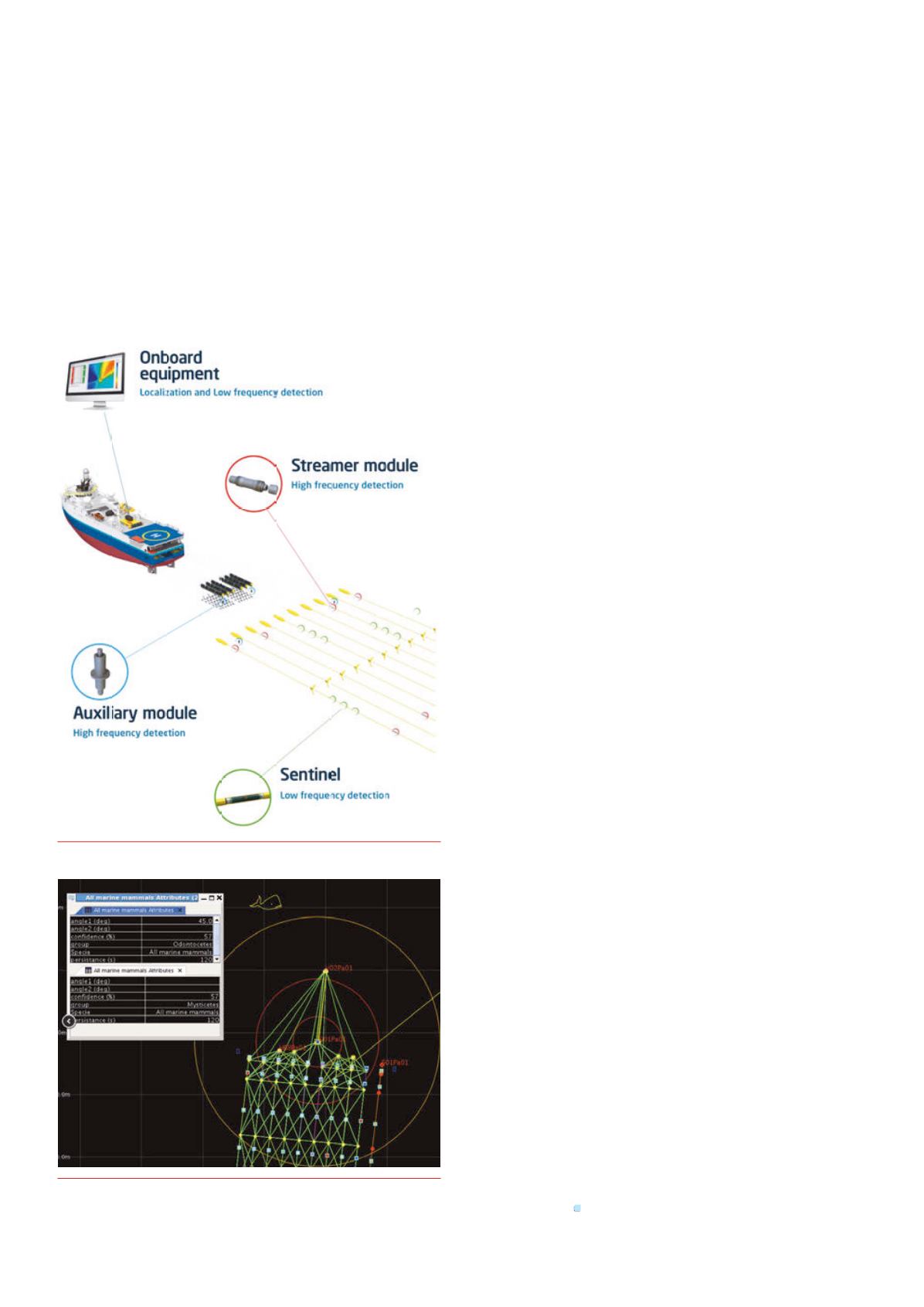
20 |
Oilfield Technology
December
2014
Current PAMsystemsoftware is not intuitive, making it cumbersome
to configure and operate:
Ì
Expert PAM operators are required for configuration and operation as
there are no standard software settings for optimal results. System
performance is inconsistent and highly dependent on the skills, ability
and experience of the operator.
Ì
Expert skills are required to analyse the data, confirmacoustic
detections, reject false alarms, provide range estimates, etc. This
subjective interpretation is operator‑dependent and results in
inconsistent, unreliable performance.
Cuttingthevolume
A new fully integrated passive acousticmonitoring systemknown as
QuietSea overcomesmany of the limitations of current PAMsystems.
Designed to integratewith the Seal 428 seismic acquisition system,
SeaProNav navigation system, and incorporated in the Sentinel® streamer,
this systemoffers various benefits to seismic contractors.
By eliminating the need for deployment of separate PAMantennas
at sea, theQuietSea systemmitigates the possibility of accidents during
deployment, retrieval and operation, thus reducing the possibility of
downtime and possible equipment replacement costs.
In addition, the bidirectional communicationwith the navigation
software, coupledwith the network of broadband in‑seamodules
seamlessly integratedwithin the Sentinel® streamers, provides improved
cetacean localisation accuracy and real time reporting of detected events
for faster decisionmaking.
QuietSea offers an enhancedmonitoring of the exclusion zone (EZ)
and beyond. Thanks to the very lownoise Sentinel hydrophones, the
systemutilises up to 512 sensors tomonitor baleenwhales, such as blue
whales, down to 10Hz.
Additionally, numerous broadband hydrophones seamlessly
integratedwithin the streamers and placed in strategic positions (on
streamer heads, outside the vessel wash and close to the centre of the
EZ) constitute a large, redundant 2D array that provides good detection
and localisation of baleen and toothedwhales, regardless of the listening
direction.
QuietSea relies on advanced automated detection and localisation
algorithms, which drastically decrease the false alarmrate, delivering
truly objective, consistent and reliable information for decisionmaking,
regardless of the skills, ability or experience of the operator.
TheQuietSea GUI is designed to be intuitive and user‑friendly, with
minimal settings, relying on self‑adjusted software parameters to deliver
stable performance across various environments.
The rugged and reliable in seamodules are based on a field‑proven
design, with a built‑in quality control capability that allows the systemto
assess the health of the hydrophones aswell as the detection performance
of themodules.
QuietSea provides seismic contractorswith a reliable PAMsystem
optimising the control of their environmental footprint.
Conclusion
Newequipment accompanies the seismic exploration industry effort to
reduce its environmental impact.
In land acquisition, noise, particle emissions, aswell as fuel
consumption are significantly reduced thanks to compact vibrators
including features such as IPM, Stage 3b/Tier 4i emission standard
compliance and soundproof housings. Combinedwith high accessibility
and broadband capacity, such vibrators are ideal seismic sources for
various applications, such as limited access areas (populated areas,
forests, narrow lanes, or sebkhas), mixed source shooting (where large and
small vibrators operate according to terrain type for optimal productivity),
imaging of shallow targetswith high frequencies (formines, gas storage or
CO
2
sequestration) and complete or partial replacement of dynamite by
safer andmore productive sources.
Inmarine acquisition, PAM is recognised as a promising tool to
complement currentmitigationmeasures during geophysical surveys, but
has yet to realise its full potential.
QuietSea’s integrated PAMsystemaddressesmost of the limitations
encountered in today’s PAMsystems, making it themost intuitive
PAMsystemavailable formarine seismic surveys.
By carefully balancing both the expectations of the regulatory
agencies and the operational constraints of the seismic contractor,
systems such as QuietSea will help PAM gain the wide acceptance
it deserves among the marine seismic industry while actively
contributing to the reduction of the environmental footprint of marine
seismic surveys.
Figure 5.
QuietSea inseaarchitecture.
Figure 6.
SeaProNav display showing Exclusion Zones and localised
cetacean.


